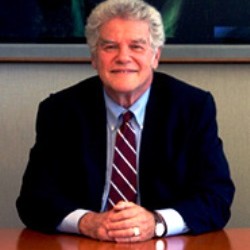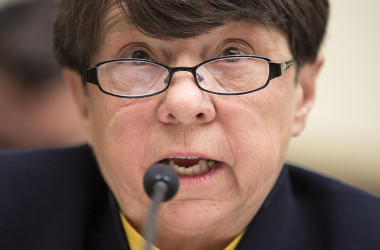
IPO Watch update courtesy of Renaissance Capital
Nutanix (NTNX): On file since December 2015, Nutanix plans to raise $168 million at a $2 billion market cap in its long-awaited IPO. Nutanix is a leader in the rapidly-growing market for “hyperconverged” networking, and it will be the year’s second VC-backed tech “unicorn” after Twilio (TWLO; +327%). Few IPOs can claim over $200 million in billings in the most recent quarter with 118% growth, though its accumulated deficit of $442 million is just as rare. Recently, IPO investors have been favorable toward high-loss, high-growth stories, and Nutanix has already posted three consecutive quarters of positive cash flow from operations.
MedEquities Realty Trust (MRT): The week’s largest IPO, MedEquities plans to raise $259 million at a market cap of nearly $400 million. While the REIT is concentrated both by geography (TX and CA are 86% of rent) and customers (top 5 are 97%), it boasts an experienced management team, a portfolio of long-term triple-net leases and a 6.5% annualized yield. Close peer Community Healthcare Trust (CHCT; 2015 IPO) is up 25% this year, while Global Medical REIT (GMRE) has traded up 4% from its June 2016 IPO.
Fulgent Genetics (FLGT): This small but fast-growing genetic test company is set to raise $60 million at a market cap of $235 million. Differentiated with its ability to more than 18,000 gene tests, Fulgent grew sales by 82% in the 2Q, reaching almost $4 million with a 24% operating margin. The seven diagnostics IPOs since 2015 average a return of -37%, though Fulgent’s closest peers have outperformed in recent months.
Tabula Rasa HealthCare (TRHC): Hoping to raise $60 million at a market cap of $251 million, Tabula Rasa helps long-term care facilities avoid adverse drug events from mismanaged prescriptions. The company grew 32% in the first half of 2016, giving it trailing annual sales of $80 million with an adjusted EBITDA margin of 13%.
Full Spectrum (FMAX): This micro-cap company, which sells products for private cellular networks, pushed back its $15 million IPO to the week ahead. AzurRx BioPharma (AZRX), a biotech that originally set terms in August, still hopes to raise $12 million
Medical device company Obalon Therapeutics sets terms for $75 million IPO
| 9/26/16 Obalon Therapeutics, which is developing an intragastric medical device to assist with weight loss, announced terms for its IPO on Monday.
The Carlsbad, CA-based company plans to raise $75 million by offering 5 million shares at a price range of $14 to $16. Insiders intend to purchase $20 million worth of shares in the offering. At the midpoint of the proposed range, Obalon Therapeutics would command a fully diluted market value of $267 million. Obalon Therapeutics was founded in 2008 and booked $4 million in sales for the 12 months ended June 30, 2016. It plans to list on the Nasdaq under the symbol OBLN. UBS Investment Bank, Canaccord Genuity and Stifel are the joint bookrunners on the deal. It is expected to price during the week of October 3, 2016. |
The Profit IPO: Camping World sets terms for $250 million IPO
| 9/26/16 Camping World Holdings, the largest RV retailer in the US offering new and used vehicles, parts, services and financing, announced terms for its IPO on Monday.
The Lincolnshire, IL-based company plans to raise $250 million by offering 11.4 million shares at a price range of $21 to $23. At the midpoint of the proposed range, Camping World Holdings would command a market value of $1.8 billion.CEO Marcus Lemonis stars in CNBC’s reality show The Profit. Camping World Holdings was founded in 1966 and booked $3.5 billion in sales for the 12 months ended June 30, 2016. It plans to list on the n/a under the symbol CWH. Goldman Sachs, J.P. Morgan, BofA Merrill Lynch and Credit Suisse are the joint bookrunners on the deal. It is expected to price during the week of October 3, 2016. |
| Keywords / Tickers: CWH |
Advanced Disposal, a waste removal company, sets terms for $375 million IPO
| 9/26/16 Advanced Disposal Services, a vertically integrated provider of solid waste collection, recycling and disposal services, announced terms for its IPO on Monday.
The Ponte Vedra, FL-based company plans to raise $375 million by offering 19.3 million shares at a price range of $18 to $21. At the midpoint of the proposed range, Advanced Disposal Services would command a fully diluted market value of $1.6 billion. Advanced Disposal had previously attempted to go public in February 2016 but ultimately postponed the deal. Advanced Disposal Services was founded in 2000 and booked $1.4 billion in sales for the 12 months ended June 30, 2016. It plans to list on the NYSE under the symbol ADSW. Deutsche Bank, Credit Suisse, Barclays, UBS Investment Bank, BofA Merrill Lynch, Macquarie Capital, Morgan Stanley and Stifel are the joint bookrunners on the deal. It is expected to price during the week of October 3, 2016.
Magnetic memory: Everspin Technologies, a memory chip provider, sets terms for $45 million IPO
|
IPO Market Snapshot
The Renaissance IPO Indices are market cap weighted baskets of newly public companies. The Renaissance IPO Index is up 2% year-to-date, while the S&P 500 is up 6%. Renaissance Capital’s IPO ETF (NYSE: IPO) tracks the index, and top ETF holdings include Alibaba (BABA), Synchrony Financial (SYF) and Citizens Financial Group (CFG). The Renaissance International IPO Index is flat year-to-date, compared to +5% for ACWX. Renaissance Capital’s International IPO ETF (NYSE: IPOS) tracks the index, and top ETF holdings include NN Group and Aena S.A. To find out if this is the best ETF for you, visit our IPO Investing page.



